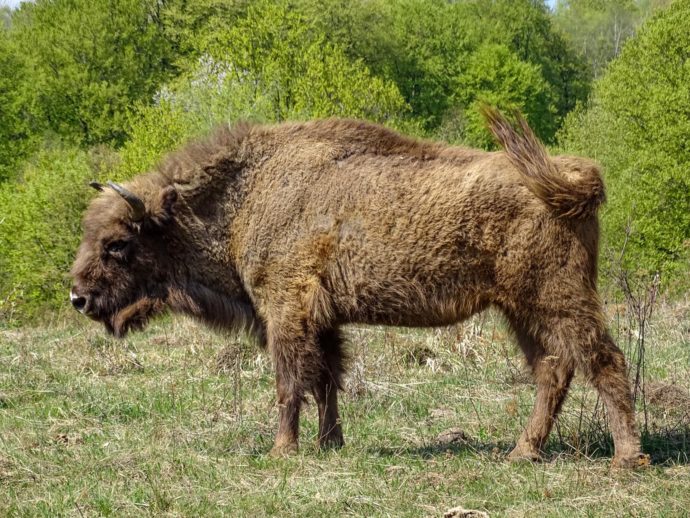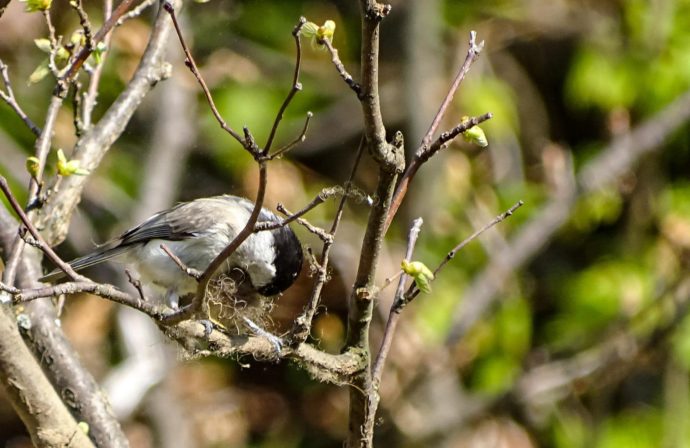Bison and biodiversity in the Tarcu Mountains Natura 2000 site
Nature conservation through the recovery of the European bison in the Southern Carpathians lies at the foundation of the Life Bison project. By reintroducing this keystone species which disappeared due to excessive hunting and loss of habitat over 200 years ago we ensure not only the increase in numbers of the population of a vulnerable species across Europe, but also, a much needed balance in the local ecosystem of the Southern Carpathian landscape.
Maintaining biodiversity and helping it flourish through the presence of the bison can happen only assisted by the support of the local communities who are the gatekeepers to the wild and the constant strive for a sustainable way of life which relieves pressure on natural resources.

Țarcu Mountains view from Muntele Mic / DAN DINU
Where is the Tarcu Mountains Natura 2000 site located?
The first rewilding area in the Southern Carpathians where now over 50 bison call their home is situated in the Natura 2000 site Tarcu Mountains which extends over 58.600 hectares and is surrounded by other 5 national parks, three in the east (Retezat, Domogled – Valea Cernei and UNESCO Geopark Ţara Haţegului) and other two
Semenic – Cheile Caraşului and Geoparcul Platoul Mehedinţi localized 19 and 11 km away.

Bison female grazing in the Southern Carpathians / CATALIN JOSAN
The presence of the bison
A landscape architect, the bison molds the landscape using its grand appetite for grass, tree bark and saplings and its huge body creating open areas in the forest, pathways and feeding grounds for other smaller herbivores such as red and roe deer. The illusive and daring chamois is also part of the landscape and can come across the bison which already reached higher altitudes of up to 2132 meters.

Herbivores follow in the tracks of bison feastiong on more grass and increasing their numbers.
On the tracks of the herbivores follow the large carnivores such as bear, wolf and lynx.
The brown bear has left his mark in the rewilding area rangers and hunters finding proof of his presence since the very first transports of bison in 2014 with a slow increase in numbers from 23 in 2014 to 25 in 2018 according to data collected and reported by the two hunting associations in the area where bison are roaming (Armeniș and Higeg).
Although the lynx uses area only as a passage to his hunting grounds in more rocky areas camera trap footage, tracks and even sightings of this stealthy predator have been noticed, hunting associations reporting a growth in numbers from 4 in 2014 to 11 in 2018.
Wolf sightings have doubled since 2014 from 5 to 10 in 2018.
Jackals have also been caught on camera by our rangers, their territory, usually more south-bound extending into the Carpathian area due to the lack of presence of the wolf, the balance of the ecosystem now beginning to re-establish itself with hopefully what we expect to be the comeback of the wolf because his prey would increase with the presence of the new giants.

Birds use bison hair as insulating material for their nests insuring the chicks stay warm and strong. / CATALIN JOSAN
Smaller creatures also thrive, like insects that feed on bison manure and dead wood. One insect worth mentioning is the “Capricorn beetle” (Cerambyx), which is responsible for recycling dead trees or fallen wood, which enables the circulation of nutrients back into the environment.
According to a study made in the Natura 2000 site in 2015 there are 89 bird species. Birds feed on insects that adore bison manure and birds also use bison fur for nest insulation. Birds and small mammals also feed on forest berries which can grow more due to the open spaces left by grazing bison.

Insects are essential pollinators and prime food for birds. / DAN DINU
Amphibians use the bison dust bath sites that fill with rain water as much needed ponds in their migration from lake to lake. The Yellow-bellied toad (Bombina variegate) and the Fire salamanders (Salamandra salamandra) are endangered, but now a more common sight in the Bison Hillock.
Flora also benefits as bison carry in their fur and through consuming a diverse range of herbs more than 150 species of plants that get dispersed in a wide range they roam free. Forest berries which grow extensively due to the open spaces left by grazing bison thus ensuring food for birds and mammals but also for humans who collect berries for domestic use.
The diversity of flowers also helps pollinisers and the entire circle of life stay on track.

Salamander populations are bouncing back back to the Southern Carpathians thanks to the return of the bison / DAN DINU
Endangered species that bison could help come back
In the Tarcu Mountains Natura 2000 site there were identified several endangered species out of which 163 invertebrate species (e.g. Rosalia alpina, Morimus funereus, Lucanus cervus), 7 fish species ( e.g. Thymallus thymallus, Gobio uranoscopus), 5 amphibians (Triturus alpestris alpestris, Bombina variegata, Bufo bufo, Rana temporaria,
Salamandra salamandra), 8 repriles (out of which Anguis fragilis, Vipera berus, Coronella austriaca), 14 mammals (e.g. Canis lupus, Lynx lynx, Ursus arctos) and 28 bird species (some of which Aquila pomarina, Aquila chrysaetos, Tetrao urogallus, Bonasia bonasia)
Monitoring
There are 11 hunting associations in the Natura 2000 site Țarcu Mountains, out of which two are closely collaborating with the Life Bison project in order to track and understand better the relationship between species and the impact of the bison.
Monitoring with hidden cameras has pointed out that the bison live in harmony with wild boar and other ungulates, a clear sign that nature is following its course.
Making way for a green future
Opening up paths and creating ecological corridors, the bison will bring about the genetic strength all species need to be resilient in the future.
Although research based on data is still weak at this point in time, if all goes well and the number of bison in the Southern Carpathians rises to a viable group that can have a true impact, we are hopeful that in the following decades we will see an increase in biodiversity in the region, benefiting not only natural processes but also human health and sustainable nature related activities.

Bison in the Tarcu Moutains / WWF Romania